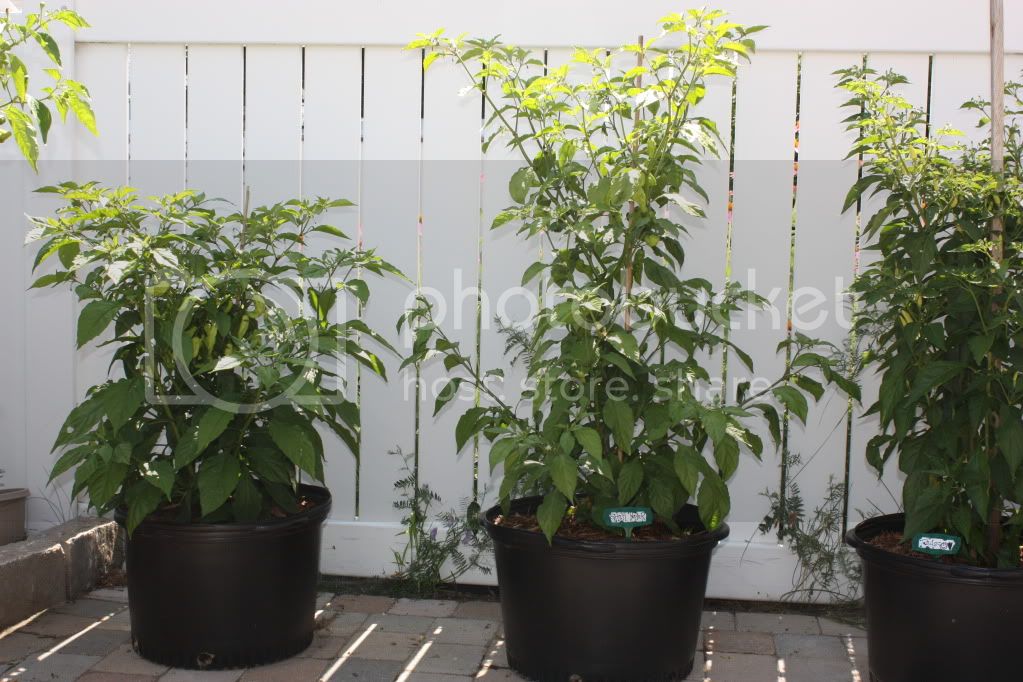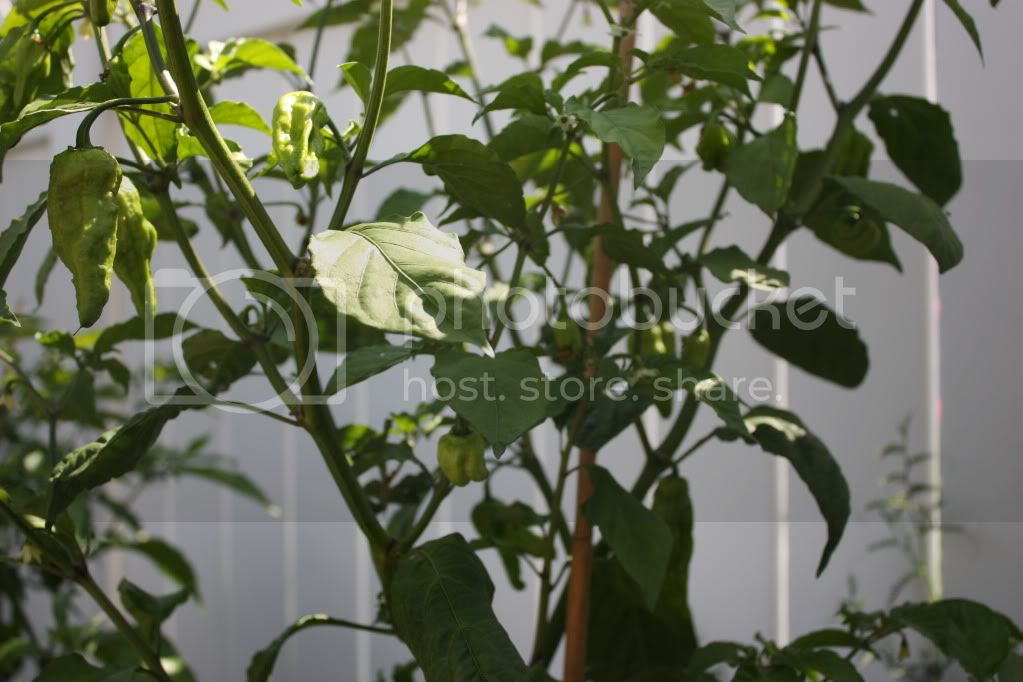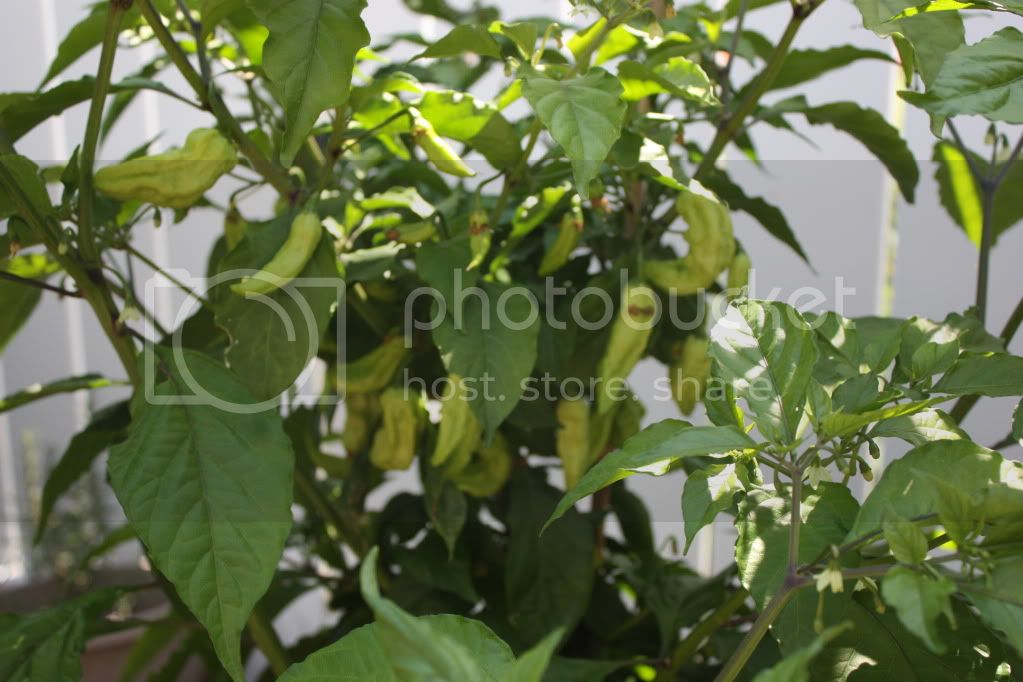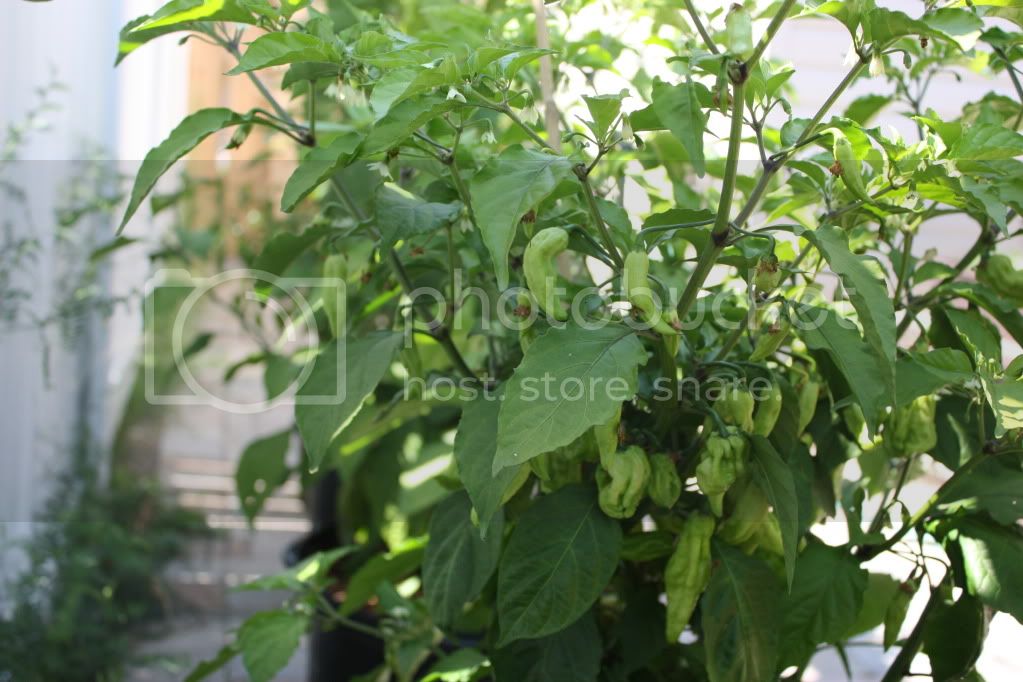When I was hardening off my plants this past spring I noticed that the bottom leaves of my two bhut jolokia plants were becoming damaged from the hardening off process. Although they were still attached to the plants, the leaves were turning and badly browned. When I read through the forum and asked people for advice there was no general agreement on whether to cut the leaves back. Some feel it is better to leave the plants alone and let nature take its course, while others believe that it is better to prune it so the plant can grow new sets of more functional leaves.
I decided this was a perfect opportunity to conduct a little experiment. I cut the damaged bottom leaves off of one of the plants and left the other alone. Both plants received the same amount of water and compost tea at the same times, and both experienced the same growing environment from seed sowing to now. The only difference was that the plant whose leaves I did not cut back was about 2 inches taller when the pruning was done.
I found the dramatic differences in the results fascinating, and I am sharing them here because others may find them interesting as well.
The plant on the left is the one that was cut back, and it is currently sitting at 37 inches from ground level to the top of the tallest leaf. The one on the right is the one that was not cut back, and it is now sitting at 48.5 inches tall. I apologize for the edge of the tabasco pepper that entered into the picture on the far right, but I did not want to move any plants for purposes of taking pictures. I prefered to let everyone see them as they are and as they have been since going outside in the spring.
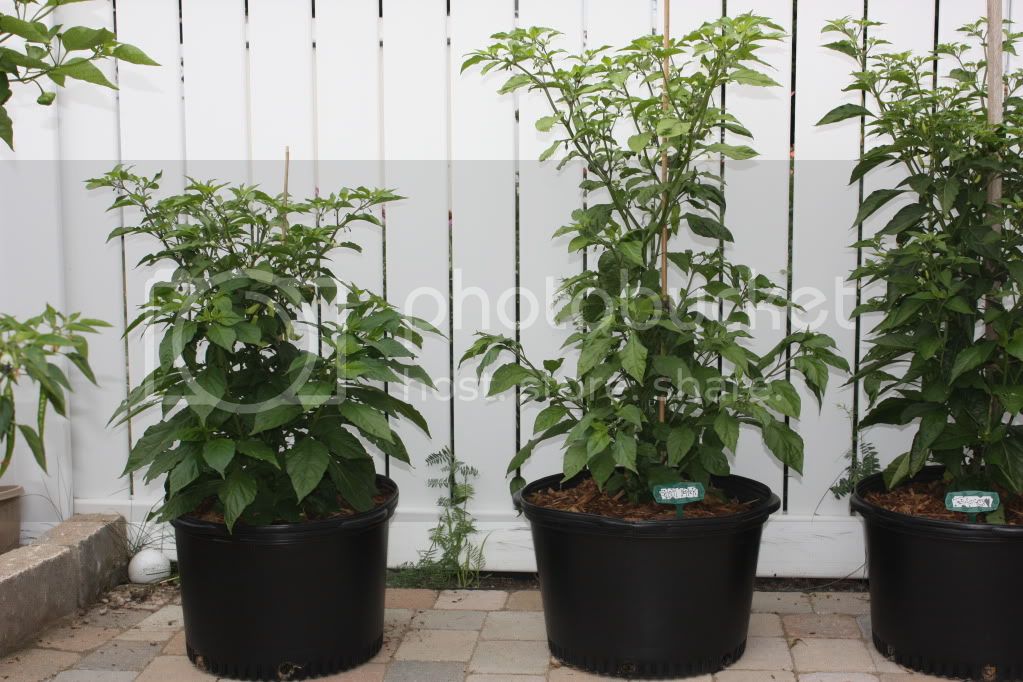
This is the bhut that was pruned in the spring. It has way more folliage at the bottom of the plant (so much so that it is actually hard to water), but it is now about a foot shorter than the other plant. You can see loads of pods, but more on that later.
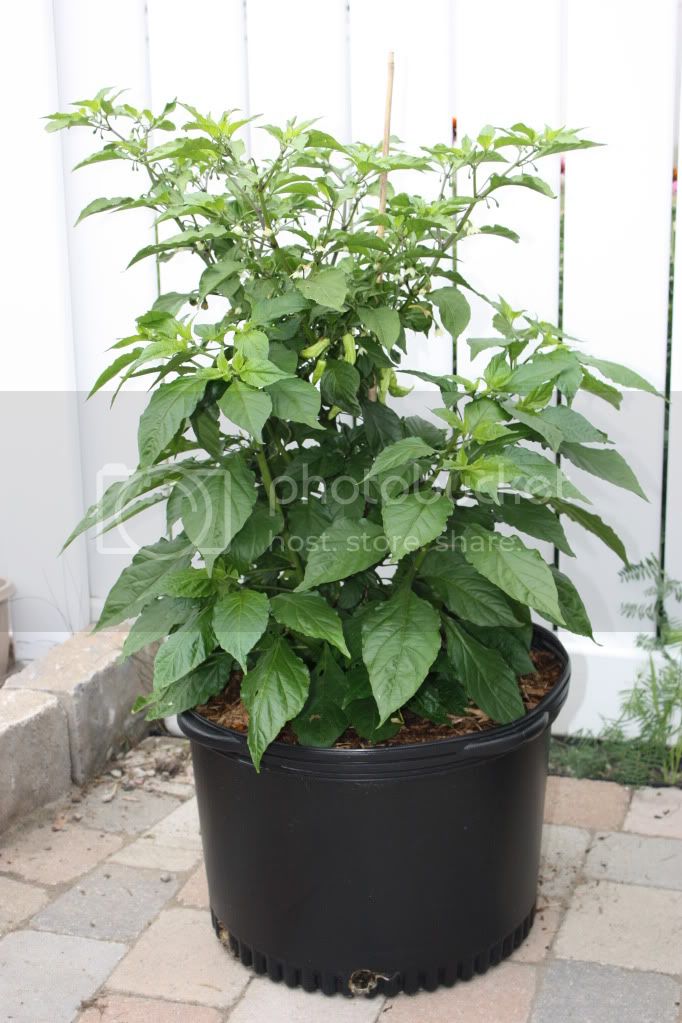
The plant that was not pruned grew way taller, but you may notice already that there are fewer pods. The folliage is also more spread out, and there is definitely less on the bottom part of the plant.
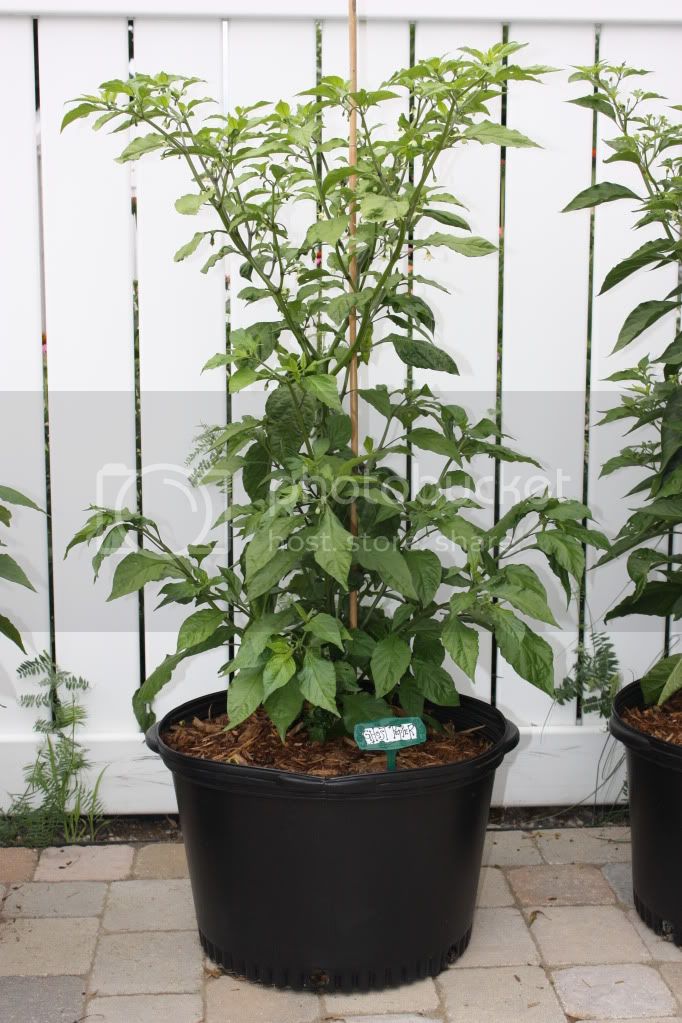
Although the plant that was not clipped is much taller it only has three pods right now. Assuming some of these flowers take it will pod up soon.
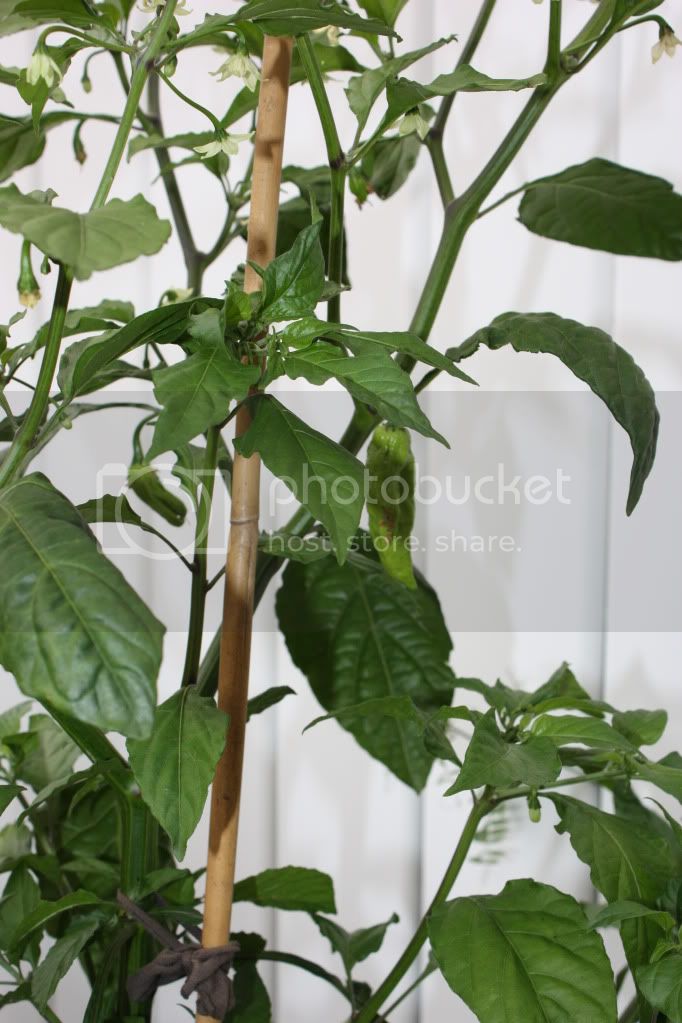
The bhut that was clipped has somewhere between 22-26 pods right now (I get a different number every time I try to count them). This number is growing by two or three a day. All of the pods are in a ring around the center part of the plant.
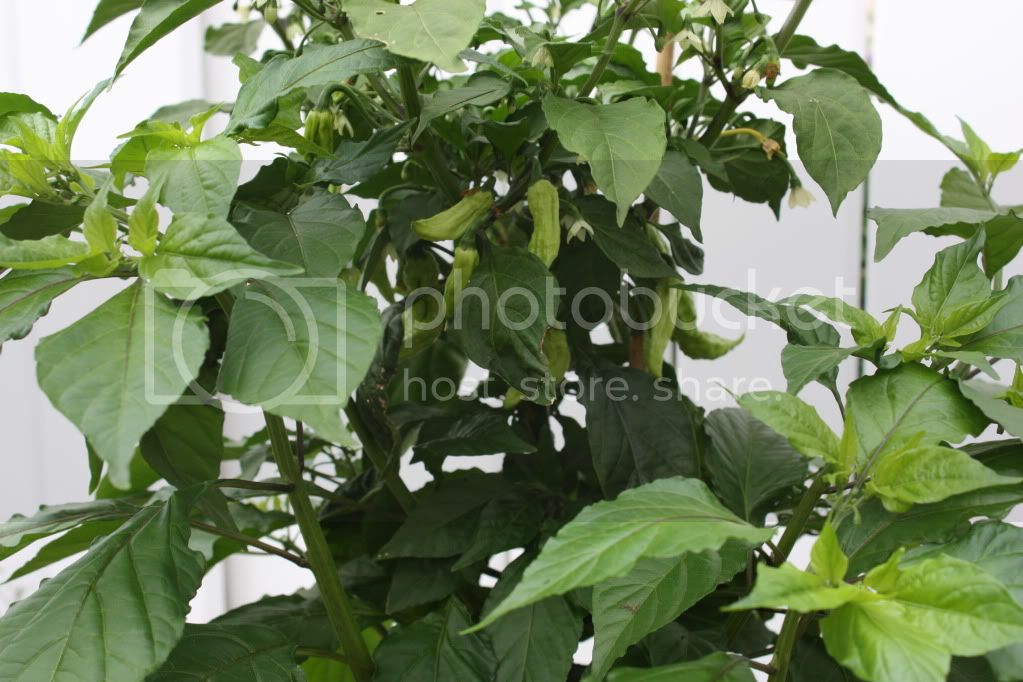
Gratuitous pod porn shot.
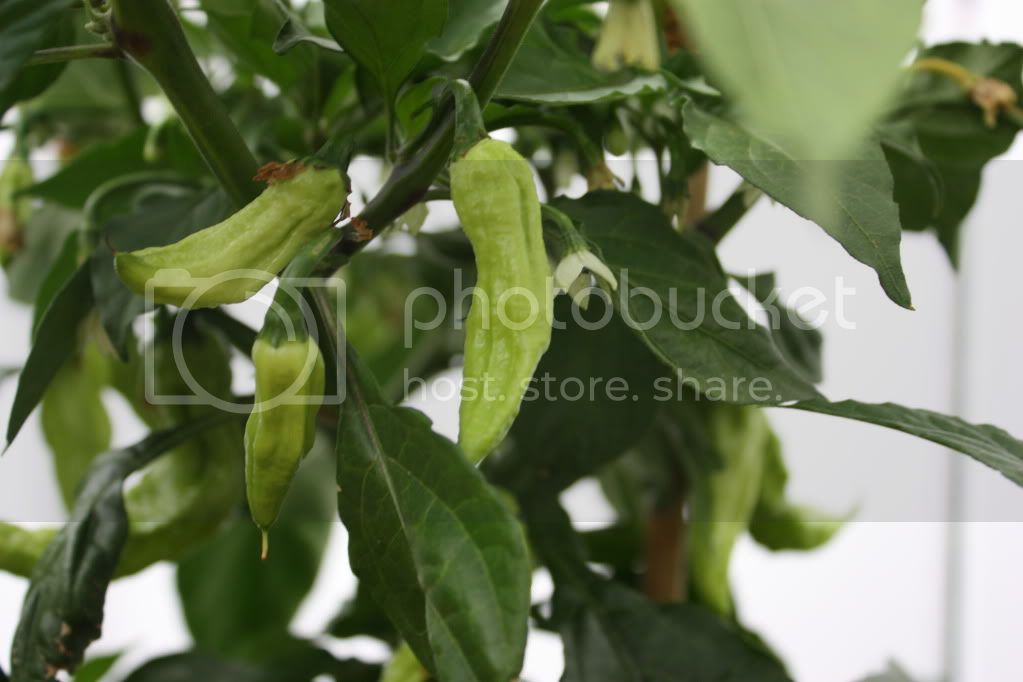
So basically what I found was that the plant that was cut back in the spring grew more folliage at the bottom of the plant, was shorter, and produced far more pods in the early part of summer. The plant that was not cut back grew taller, had a more even distribution of folliage, but was behind in terms of podding up.
Just a last note, the positioning of the plants probably did not matter much. The bhut that was not cut back was in the middle of the other bhut and a tabasco plant and a kung pao plant even further to the right. The plants on either side all podded up very well, while the bhut that had been cut back has not produced many pods yet. I found this really strange because all of the plants flowered up at the same time, but the taller bhut dropped most of them.
I hope you enjoyed seeing the results of my little experiment.
I decided this was a perfect opportunity to conduct a little experiment. I cut the damaged bottom leaves off of one of the plants and left the other alone. Both plants received the same amount of water and compost tea at the same times, and both experienced the same growing environment from seed sowing to now. The only difference was that the plant whose leaves I did not cut back was about 2 inches taller when the pruning was done.
I found the dramatic differences in the results fascinating, and I am sharing them here because others may find them interesting as well.
The plant on the left is the one that was cut back, and it is currently sitting at 37 inches from ground level to the top of the tallest leaf. The one on the right is the one that was not cut back, and it is now sitting at 48.5 inches tall. I apologize for the edge of the tabasco pepper that entered into the picture on the far right, but I did not want to move any plants for purposes of taking pictures. I prefered to let everyone see them as they are and as they have been since going outside in the spring.

This is the bhut that was pruned in the spring. It has way more folliage at the bottom of the plant (so much so that it is actually hard to water), but it is now about a foot shorter than the other plant. You can see loads of pods, but more on that later.

The plant that was not pruned grew way taller, but you may notice already that there are fewer pods. The folliage is also more spread out, and there is definitely less on the bottom part of the plant.

Although the plant that was not clipped is much taller it only has three pods right now. Assuming some of these flowers take it will pod up soon.

The bhut that was clipped has somewhere between 22-26 pods right now (I get a different number every time I try to count them). This number is growing by two or three a day. All of the pods are in a ring around the center part of the plant.

Gratuitous pod porn shot.

So basically what I found was that the plant that was cut back in the spring grew more folliage at the bottom of the plant, was shorter, and produced far more pods in the early part of summer. The plant that was not cut back grew taller, had a more even distribution of folliage, but was behind in terms of podding up.
Just a last note, the positioning of the plants probably did not matter much. The bhut that was not cut back was in the middle of the other bhut and a tabasco plant and a kung pao plant even further to the right. The plants on either side all podded up very well, while the bhut that had been cut back has not produced many pods yet. I found this really strange because all of the plants flowered up at the same time, but the taller bhut dropped most of them.
I hope you enjoyed seeing the results of my little experiment.

